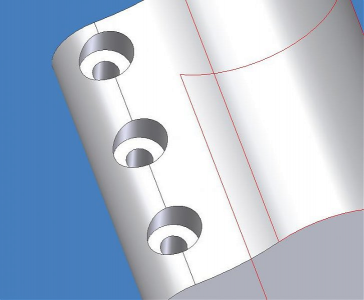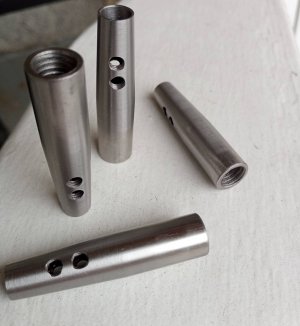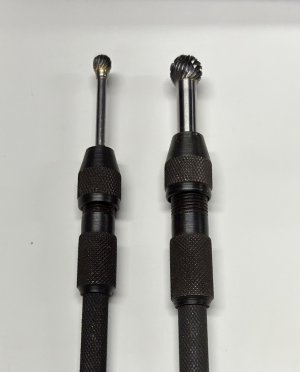-
Welcome back Guest! Did you know you can mentor other members here at H-M? If not, please check out our Relaunch of Hobby Machinist Mentoring Program!
You are using an out of date browser. It may not display this or other websites correctly.
You should upgrade or use an alternative browser.
You should upgrade or use an alternative browser.
How to clean-up small tapped threads?
- Thread starter martik777
- Start date
- Joined
- Jun 7, 2013
- Messages
- 10,098
Usually done with a countersink, which by the looks of it you might lose too many threads, I'd try a 3 cornered scraper.
- Joined
- May 4, 2019
- Messages
- 792
Ditto: countersink.
I like using a spherical, ball shaped mounted stone, 1/8” shank thru the hole mounted in a die grinder. https://www.amazon.com/GRINDING-STONE-SET-shank-mounted-MATERIAL-MAXIMUM/dp/B001F4PVS6
Attachments
- Joined
- Apr 29, 2019
- Messages
- 2,063
Ideally you want to c'sink the holes before tapping. The c'sink should be just to the OD of the thread. In cases like this where there are not a lot of threads I use a 120° c'sink to match the angle of the tooth profile. Those first imperfect threads due to the Diameter of the part are not really holding much anyhow.
You can try a c'sink now but keeping it centered will require that the c'sinking be done on the mill or the cutter jump all over.
You can try a c'sink now but keeping it centered will require that the c'sinking be done on the mill or the cutter jump all over.
- Joined
- Sep 28, 2013
- Messages
- 4,308
The problem is that these holes are tapped radially and then a taper is cut on the OD. Even on a straight surface countersinking a hole will produce an oval countersink. Here countersinking before tapping won't work, as that countersink will disappear when the taper is cut, and countersinking afterwards would have to be perpendicular to the taper, not inline with the tapped hole.
I don't think there's really much else to do than touch them up with a burr or small stone. From a design perspective, if these are designed to hold something (presumably these are some kind of tapered threaded extension?) then it'll be tough finding set screws short enough to not protrude above the surface of the taper and still have some means of tightening them. If having the set screws protrude above the surface then it would make more sense to have a steeper taper after the last threaded hole.
I don't think there's really much else to do than touch them up with a burr or small stone. From a design perspective, if these are designed to hold something (presumably these are some kind of tapered threaded extension?) then it'll be tough finding set screws short enough to not protrude above the surface of the taper and still have some means of tightening them. If having the set screws protrude above the surface then it would make more sense to have a steeper taper after the last threaded hole.
I concur with the idea of using as shallow a countersink as possible, but I see the conundrum. Since your outer surface is cylindrical and not flat, you will be in pretty deep before you get 360* countersunk. Not knowing the purpose this might seem silly, but I have been known to counter bore with an end mill until I have a flat area completely around the hole. Something like this:






